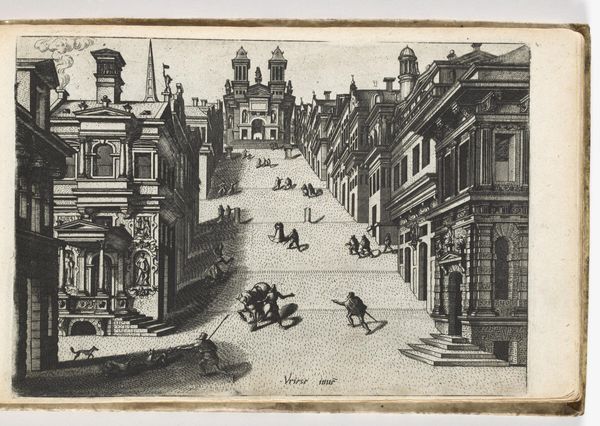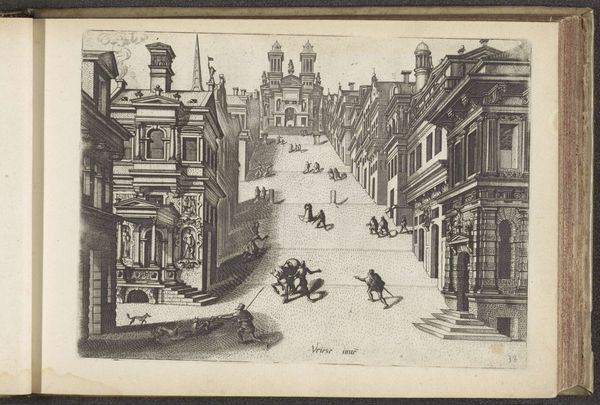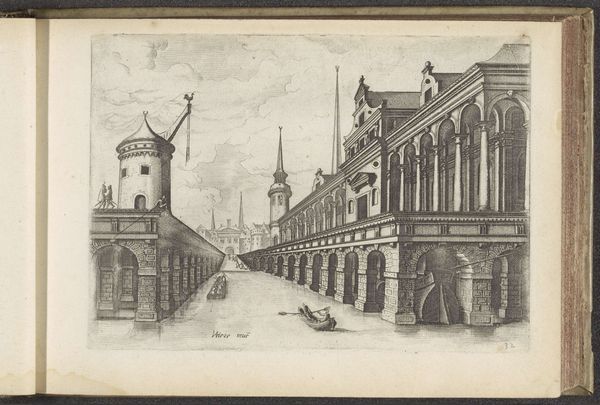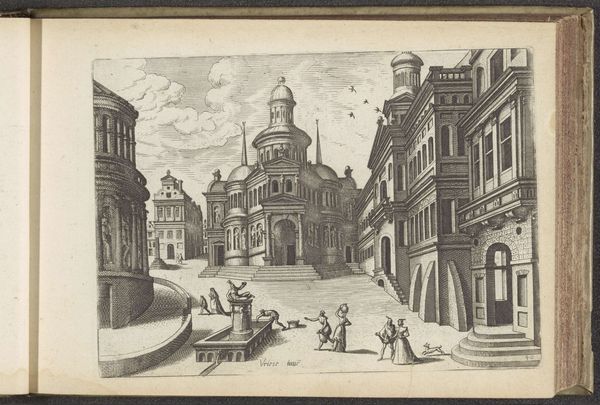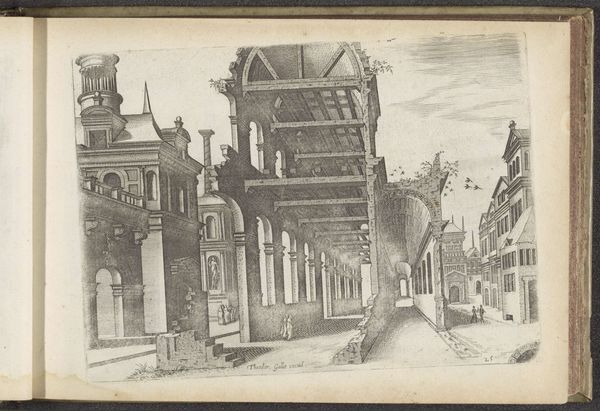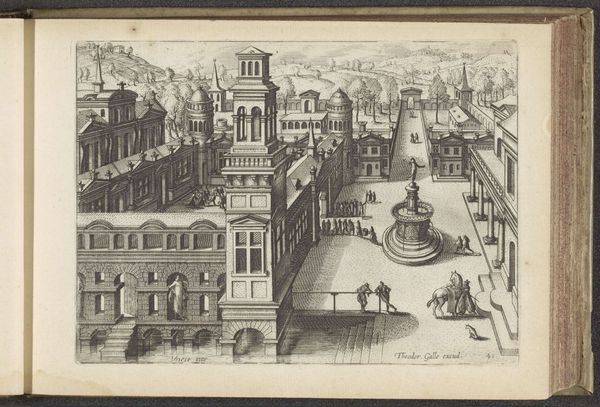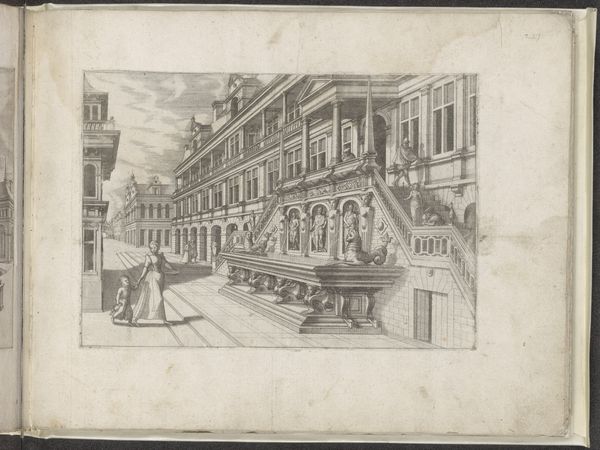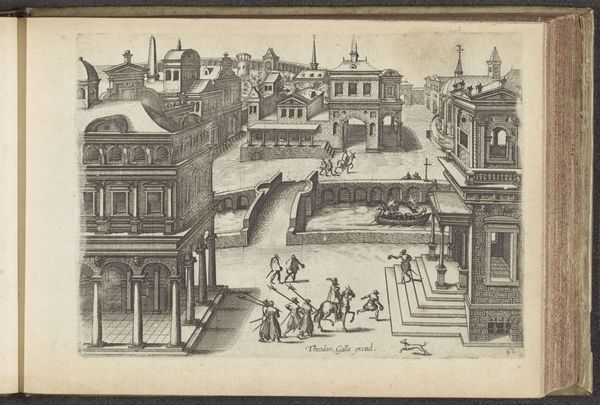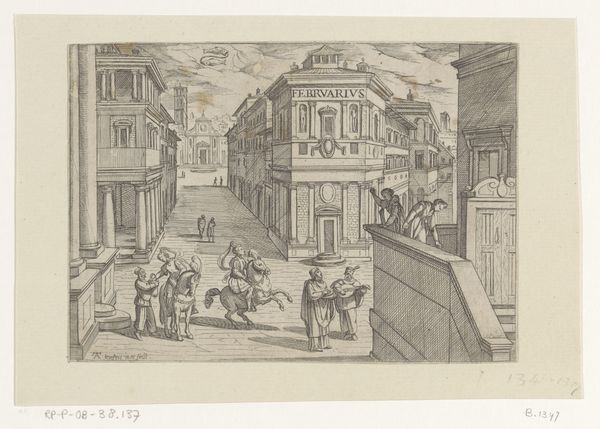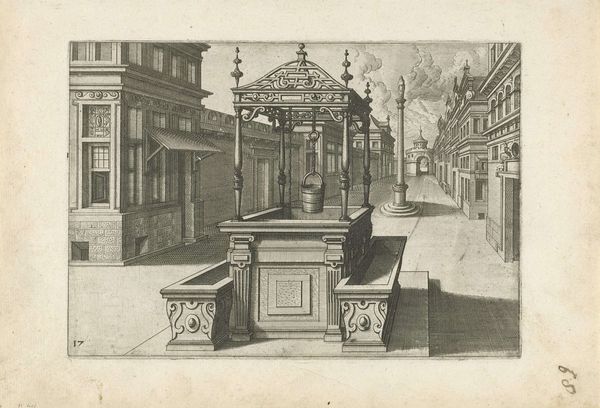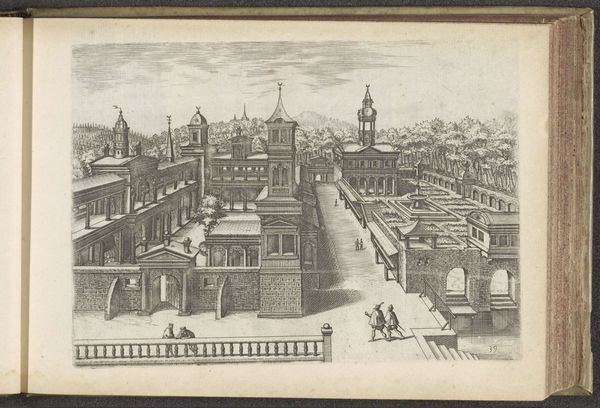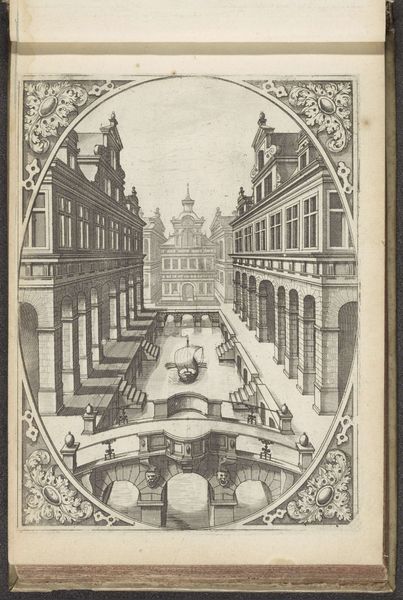
Straatgezicht met een man met kind en twee honden 1562 - 1601
0:00
0:00
johannesoflucasvandoetechum
Rijksmuseum
Dimensions: height 155 mm, width 213 mm
Copyright: Rijks Museum: Open Domain
Curator: This print is titled "Street View with a Man with Child and Two Dogs." Attributed to Johannes or Lucas van Doetechum, it dates from between 1562 and 1601. Editor: It has an austere feeling, all clean lines and ordered perspective, but enlivened by the charming presence of those figures and the dogs in the foreground. The formal geometries feel very… rational. Curator: Precisely. What does this emphasis on order and clarity tell us about the period and the burgeoning mercantile class for whom these cityscapes held particular appeal? Editor: Look how the composition directs the gaze, leading the eye methodically from the street up to the church in the background—a point of both architectural and perhaps symbolic convergence. The print uses etching, resulting in clean lines to create depth and three-dimensionality. Curator: And that's where context enriches our understanding. Street scenes were popular as emblems of civic pride and displays of societal harmony, yet these images often whitewashed social realities by often overlooking the era’s class disparities and injustices. It portrays idealized civic life for the rising merchant class while omitting the often unpleasant day-to-day experiences for many in early modern urban centers. Editor: Yet this meticulous detailing and almost photographic fidelity still offer tremendous insights. Notice the elaborate facades of the houses, and the intricate textures achieved using cross-hatching in some areas. I can almost hear the echo of footsteps on the cobblestones. Curator: What makes this image particularly poignant, I think, is its tension. Ostensibly depicting communal ideals and societal unity, what unspoken rules or exclusions are inherent to maintaining such visual harmony? Editor: I am intrigued by your point of the image acting as a form of silent exclusion that echoes societal power dynamics. Thinking of purely form and aesthetic, it feels more of an optimistic celebration of organized urban space. Curator: I suppose, ultimately, these seemingly contrasting viewpoints can enrich our experience of this quietly powerful artwork, don't you agree? Editor: Absolutely. It reminds us that there are ever-diverging, ever-valid ways to analyze and understand works of art like this.
Comments
No comments
Be the first to comment and join the conversation on the ultimate creative platform.
